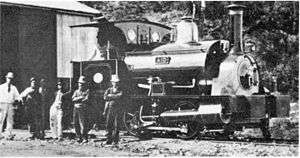1878 in South Africa
The following lists events that happened during 1878 in South Africa.
| |||||||||
| Decades: |
| ||||||||
|---|---|---|---|---|---|---|---|---|---|
| See also: | |||||||||
Incumbents
- Governor of the Cape of Good Hope and High Commissioner for Southern Africa: Henry Barkly.
- Lieutenant-governor of the Colony of Natal: Henry Ernest Gascoyne Bulwer.
- State President of the Orange Free State: Jan Brand.
- State President of the South African Republic: Thomas François Burgers.
- Lieutenant-Governor of Griqualand West: William Owen Lanyon.
- Prime Minister of the Cape of Good Hope: John Gordon Sprigg.
Events
- March
- 12 – Commander R.C. Dryer takes possession of the area surrounding Walvis Bay.
- May
- 14 – Paul Kruger leads a second deputation to the United Kingdom to demand the freedom of the South African Republic.
- July
- 17 – Nqwiliso, tribal chief of western Mpondoland and eldest son of the warrior Chief Ndamase, ceded sovereign rights of Umzimvubu River mouth to the Cape Colony [1][2]
- December
- 11 – The British present an ultimatum to the Zulu king Cetshwayo, triggering the Anglo-Zulu War.
- Unknown date
- The 9th Cape Frontier War ends.
- The first telephones are set up in the Cape.
- The telegraph service between Natal and Transvaal is opened.
- The British suspend the elected Cape Government and assume direct control, after escalating disagreements on confederation and frontier policy.
- The last confirmed Cape Lion dies.[3]
Births
- 14 March – Alexander du Toit, geologist. (d. 1948)
Deaths
Railways
Railway lines opened
- 25 May – Natal – Umgeni to Avoca, 4 miles 21 chains (6.9 kilometres).[4]
- 1 August – Cape Midland – Glenconnor to Mount Stewart, 48 miles 70 chains (78.7 kilometres).[5]
- 15 August – Cape Eastern – Kei Road to Döhne, 20 miles 45 chains (33.1 kilometres).[5]
- 15 August – Cape Eastern – East London to Landing Jetty, 1 mile 58 chains (2.8 kilometres).[5]
- 4 September – Natal – Durban to Pinetown, 17 miles 15 chains (27.7 kilometres).[6]
- 4 November – Cape Western – Kleinstraat to Grootfontein, 86 miles 49 chains (139.4 kilometres).[5]
Locomotives
- The Cape Government Railways places a second locomotive in service on construction work on the Kowie harbour project at Port Alfred, a 4 ft 8 1⁄2 in (1,435 mm) broad gauge 0-4-0 saddle-tank engine named Aid.[7]
gollark: One word. I am not bothering with hyphens.
gollark: A highly advanced editing experience™.
gollark: It appears that the live-word-count thing doesn't kill performance badly enough that I need to optimize it. Maybe 150KB isn't actually that big. Who knows.
gollark: As opposed to just rescanning it constantly via regexoid.
gollark: No, I mean in the minoteaur text editor.
References
- Kruger, D.W. (ed)(1972). Dictionary of South African Biography, Cape Town: Human Sciences Research Council, v. 3, p. 661.
- http://www.portstjohns.org.za/history.htm
- "V muzeu Emila Holuba se ukrýval kapský lev". Novinky.cz (in Czech). 22 May 2009. Retrieved 26 August 2011.
- Statement Showing, in Chronological Order, the Date of Opening and the Mileage of Each Section of Railway, Statement No. 19, p. 181, ref. no. 200954-13
- Report for year ending 31 December 1909, Cape Government Railways, Section VIII - Dates of Opening and the Length of the different Sections in the Cape Colony, from the Year 1873 to 31st December, 1909.
- The South African Railways - Historical Survey. Editor George Hart, Publisher Bill Hart, Sponsored by Dorbyl Ltd., Published c. 1978, p. 16.
- Holland, D.F. (1971). Steam Locomotives of the South African Railways. 1: 1859–1910 (1st ed.). Newton Abbott, Devon: David & Charles. pp. 13–14, 18. ISBN 978-0-7153-5382-0.
This article is issued from Wikipedia. The text is licensed under Creative Commons - Attribution - Sharealike. Additional terms may apply for the media files.
